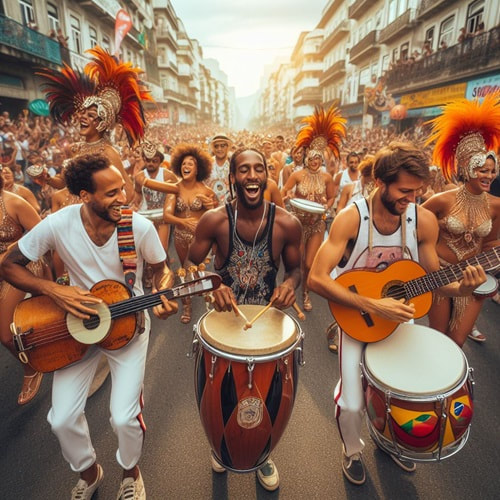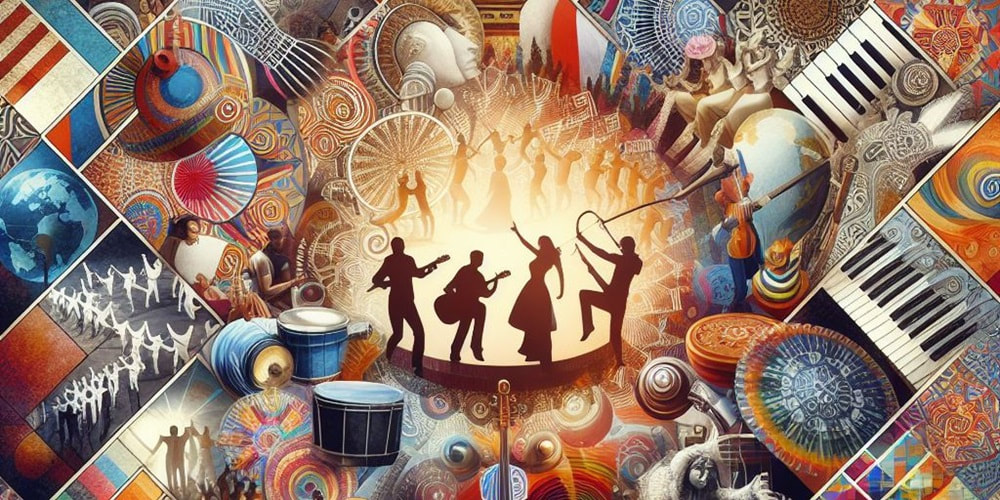Origins of Samba: a tapestry of Afro-Brazilian heritageSamba's roots delve deep into the Afro-Brazilian heritage, tracing its lineage to the rhythms and melodies brought by African slaves to Brazil. The amalgamation of African beats, indigenous influences and European instruments gave birth to a unique musical genre that evolved into the heartbeat of Brazilian culture. Samba became a voice for the marginalised, a rhythm that echoed the resilience and vibrancy of a diverse nation. Rio's Samba schools: the epicenter of CarnivalAt the heart of Rio's Carnival are the iconic Samba schools - community organisations that dedicate months of preparation for the grand parade. Each school selects a theme, designs elaborate costumes and composes original Samba songs that narrate stories of Brazilian history, folklore and societal issues. The result is a dazzling spectacle that captivates millions of spectators and showcases the creativity and unity of Rio's neighbourhoods. Carnival rhythms: the pulse of SambaSamba is more than just music. It's a rhythm that pulses through the veins of Carnival. The distinctive beat, driven by instruments like the Surdo drum, Cavaquinho guitar and the infectious sound of the Cuíca, creates an irresistible groove that compels even the most reserved onlookers to join the dance. The lively percussion orchestrates a symphony of celebration, transcending language barriers and inviting everyone to become part of the rhythmic spectacle. Blocos and Baterias: street parties in full swingBeyond the grandeur of the Samba schools, Rio's Carnival boasts countless 'Blocos', or street parties, where the infectious spirit of samba permeates every corner. Accompanied by percussion ensembles known as 'Baterias', these spontaneous celebrations draw locals and tourists alike, creating a mosaic of colours, costumes and spontaneous dance that spills into the streets. Cultural significance: Samba as a cultural expressionSamba is more than a Carnival spectacle, it is a cultural expression that embodies the soul of Brazil. It serves as a platform for social commentary, addressing issues such as inequality, race and resilience. The lyrics of Samba songs often carry profound messages, reflecting the lived experiences and collective identity of the Brazilian people. Samba schools as community hubsSamba schools play a crucial role beyond Carnival, functioning as community hubs that engage residents in cultural activities, education and social initiatives. The schools become focal points for preserving traditions, fostering creativity and instilling a sense of pride in local heritage. The impact of Samba extends far beyond the glittering parades, leaving an indelible mark on the social and cultural landscape of Rio de Janeiro. Experiencing Samba: a Carnival pilgrimageFor those seeking to immerse themselves in the magic of Samba, attending Rio's Carnival is a pilgrimage. Whether participating in a Bloco, cheering for a Samba school at the Sambadrome or dancing in the streets, Carnival offers an unparalleled opportunity to feel the pulsating energy of Samba firsthand. Samba's timeless cadenceAs the sun sets over the Christ the Redeemer statue, casting its golden glow upon the city, the timeless cadence of Samba reverberates through the streets of Rio de Janeiro. It is more than a musical genre - it is a cultural phenomenon that unites people, transcends boundaries and captures the essence of Brazilian joy. Samba in the streets of Rio is a celebration of life, an ode to resilience and a testament to the enduring spirit of a nation that dances to the beat of its own vibrant drum. Hanan Scheers I travel the world to find unexpected stories. 11 February 2024 Comments are closed.
|
InSite Magazine is created by Just Hanan. We want to show you a world full of culture and lifestyle, and try to give you lots of international travel inspiration.
InSite Magazine Lifestyle Culture Travel Active Foodie Music Visuals Destinations Europe Asia Africa North America South America Oceania More+ home Our team |
|
We respect your privacy and will only reach out when we have something important and exiting to share! - Kami menghormati privasi anda dan hanya akan menghubungi anda jika kami punya sesuatu yang penting dan menarik untuk dibagikan!
|








